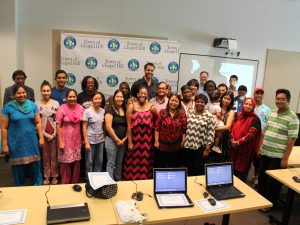
This is a repost on how to have more permanent forums and tools to support strong public engagement.
A hat-tip to Matt Leighninger for his thinking and permission drawn from Part 5 of his series, How Public Engagement Needs to Evolve.
Matt, a friend and colleague, identifies some of the problems as:
- In many instances, engagement happens as a temporary, stand-alone activity;
- Professionals in these different areas (for example, school policy, police-community relations, and community development) rarely work together when they are trying to engage the public;
- Every-department-for-itself engagement usually results in lower turnout. Faced with a choice about which of many meetings to attend, busy citizens will usually choose the one that is most relevant to their interests (or none at all).
In response, Matt proposes to build some “universal pieces” of local engagement infrastructure, such as:
- Hyperlocal and local online networks. This category of infrastructure (described in previous posts in this series) is already rapidly growing and holds great potential for connecting engagement in many different issue areas.
- Buildings that are physical hubs for participation. The political philosopher Hannah Arendt is said to have remarked that “Democracy needs a place to sit down.” Communities need accessible, welcoming, wired public spaces for engagement on a range of issues.
- Youth councils. Perhaps the most undervalued of our civic assets, youth leadership should be cultivated and supported in settings specifically for young people.
Let me add that North Carolina has an array of youth councils, twelve of which are listed here. They are not limited to big cities: Hickory (40,000 population, approximately) and Clayton (19,000 population, approximately) have youth councils.
Back to Matt:
- Engagement commissions. A local engagement commission (or advisory board) can advise a community on the design, implementation and evaluation of public participation tactics, and more broadly on building and embedding a sustainable participation infrastructure. Such a commission could be an official body constituted by local government, or a stand-alone entity recognized and supported by a range of community institutions, such as foundations, governments, school systems, chambers of commerce and interfaith councils and faith institutions
Matt’s bottom line:
“…by taking that critical step towards building a participation infrastructure, leaders can begin to sustain and support regular opportunities, activities, and arenas for people to connect with each other, solve problems, make decisions and celebrate community.”What kind of more permanent building blocks do you think are needed for sustained, high quality public engagement?
-
How much of this should come from government versus from sources separate from traditional power structures?
-
How do we evaluate what constitutes a healthy participation infrastructure?
